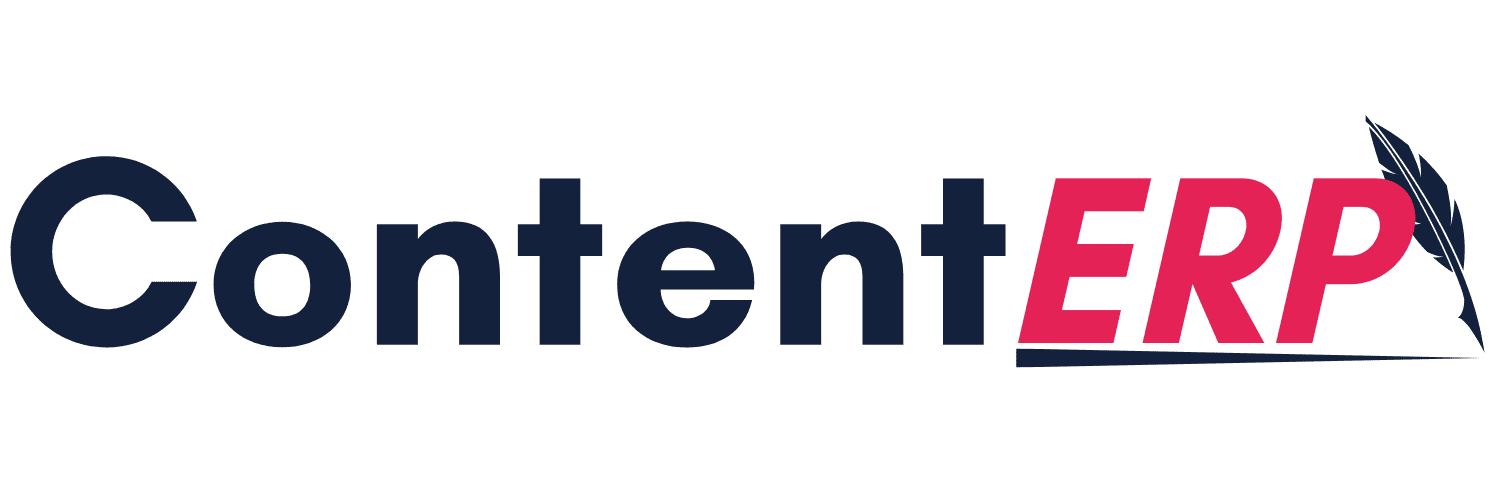by ContentERP | Oct 13, 2024 | Uncategorized
The Future of Content Management: Why ContentERP Leads the Way
In a small town in the 1990s, there was a bakery that everyone loved. Not just for the warm bread and the delicate pastries, but because the owner, Mrs. Thompson, had a system. She knew the favorite orders of every customer, remembered special requests, and ensured that the bakery always had the freshest stock. But as her business grew, so did her headaches. Soon, she was overwhelmed by orders, inventory tracking, and customer preferences. Her once-perfect system was crumbling like day-old croissants.
Enter her tech-savvy nephew, who proposed a solution: a digital system to track everything in real time, manage customer preferences, and automate inventory orders. Mrs. Thompson, though initially skeptical, was amazed by how this simple change revolutionized her business. Her bakery went from local favorite to nationwide supplier, with everything running like clockwork.
This story echoes the transformation happening in content management today. As businesses expand their digital presence, managing vast amounts of content has become increasingly chaotic. What once worked for smaller websites or teams no longer holds up. The answer? ContentERP, a comprehensive platform that leads the way into the future of content management.
 1. A Centralized Web Content Management System
1. A Centralized Web Content Management System
If content is king, then a web content management system (WCMS) is the castle that keeps everything in order. ContentERP doesn’t just provide a castle; it gives you a kingdom with a single, centralized place to manage all your web content.
Think about it—multiple writers, designers, marketers, and editors, all working on different aspects of content. Without a unified system, it’s like trying to herd cats. Content gets lost, deadlines are missed, and quality slips. With ContentERP, all your content processes are housed under one roof, allowing seamless collaboration across teams.
ContentERP offers a user-friendly interface that lets content teams create, edit, publish, and track content all in one place. Like a well-organized pantry, everything is easy to find, and nothing goes stale. Whether you’re managing a corporate blog, an e-commerce site, or social media channels, ContentERP ensures everything runs smoothly.
2. Content Automation: Say Goodbye to Repetitive Tasks
Have you ever heard the saying, “Work smarter, not harder”? This phrase could be the tagline for ContentERP’s automation features. Repetitive tasks are the bane of any content creator’s existence—uploading content, setting publish dates, adding metadata, and performing SEO checks can feel like spinning wheels without making progress.
ContentERP swoops in like a superhero, automating these monotonous processes. Scheduling posts, formatting articles, and even keyword optimization are handled with just a few clicks. By reducing the manual workload, your content team can focus on the creative aspects of their job, like brainstorming that next viral campaign.
It’s like having a personal assistant for each team member, ready to handle the grunt work. In fact, using ContentERP can feel like moving from a bicycle to a high-speed train. You’ll still get where you’re going, but much faster, with less effort.
3. The Power of Real-Time Collaboration
Imagine you’re building a sandcastle at the beach. Now imagine ten other people are helping you build it—but no one is talking to each other. Someone is adding turrets while another person is digging a moat in the wrong place. The result? A lopsided castle that falls apart at the first wave.
In the content world, real-time collaboration is the key to building a sturdy digital presence. ContentERP shines here, offering a platform where teams can work together simultaneously, making real-time updates without stepping on each other’s toes. From writing to editing to designing, all changes happen in one space, ensuring that everyone is on the same page.
No more email threads with dozens of attachments, no more version-control nightmares—just seamless teamwork that feels like a well-rehearsed dance routine. Whether you’re in New York, London, or Tokyo, ContentERP keeps the rhythm steady.
4. Advanced Analytics: Measuring What Matters
There’s a famous business adage: “If you can’t measure it, you can’t improve it.” ContentERP doesn’t just allow you to track your content’s performance—it empowers you to dig deep into the data and make informed decisions that drive growth.
ContentERP offers advanced analytics that track every piece of content, from blog posts to social media updates. You’ll know exactly how your audience interacts with your content, where they’re coming from, and how they’re engaging with your site. Armed with this data, you can refine your content strategy, focus on what works, and ditch what doesn’t.
Think of it as a treasure map, guiding you to the gold in your content marketing efforts. Every data point is like an X on the map, showing you where to dig deeper. With ContentERP’s analytics, content decisions become less of a guessing game and more of a science.
5. SEO Integration: Small SEO Tools with Big Impact
Content without visibility is like a billboard in the desert—no one sees it. That’s where SEO comes into play. But, let’s be honest, SEO can feel like a never-ending checklist of tweaks, keywords, and backend adjustments. Enter ContentERP’s integrated SEO tools, designed to simplify the process and ensure your content reaches its audience.
From on-page SEO optimization to keyword suggestions, ContentERP has your SEO needs covered. Imagine having a seasoned SEO expert in your corner, ready to guide you through each step. With small SEO tools built into the system, your content will rise through search engine rankings like a hot air balloon on a summer’s day.
The beauty of ContentERP’s SEO integration is that it’s intuitive. You don’t need to be an SEO guru to get it right—the platform guides you along the way, ensuring your content is as search-friendly as it is engaging.
6. Future-Proofing Your Content Strategy
The world of content management is evolving faster than ever. As new technologies emerge and audience expectations shift, businesses need to stay ahead of the curve. ContentERP is designed with the future in mind, continually updating and improving its features to meet the changing demands of the digital landscape.
Think of ContentERP as the Swiss Army knife of content management—versatile, reliable, and equipped for any challenge. Whether it’s incorporating artificial intelligence, voice search optimization, or dynamic content, ContentERP is always one step ahead.
In a rapidly shifting world, having a platform that grows with you is essential. ContentERP ensures that your content strategy is not just relevant today, but ready for whatever the future holds.
7. Security and Reliability: Peace of Mind for Content Teams
In the digital age, content is valuable—so valuable, in fact, that it’s often targeted by hackers and malicious software. ContentERP offers robust security features that ensure your content is safe, from draft to publication.
With built-in security protocols, automatic backups, and permission controls, ContentERP acts like a digital security guard, protecting your content at all times. You can rest easy knowing that your content—and your team’s hard work—is safe from potential threats.
It’s like having an invisible shield around your content. You don’t see it, but it’s always there, providing peace of mind.
ContentERP—The Future is Now
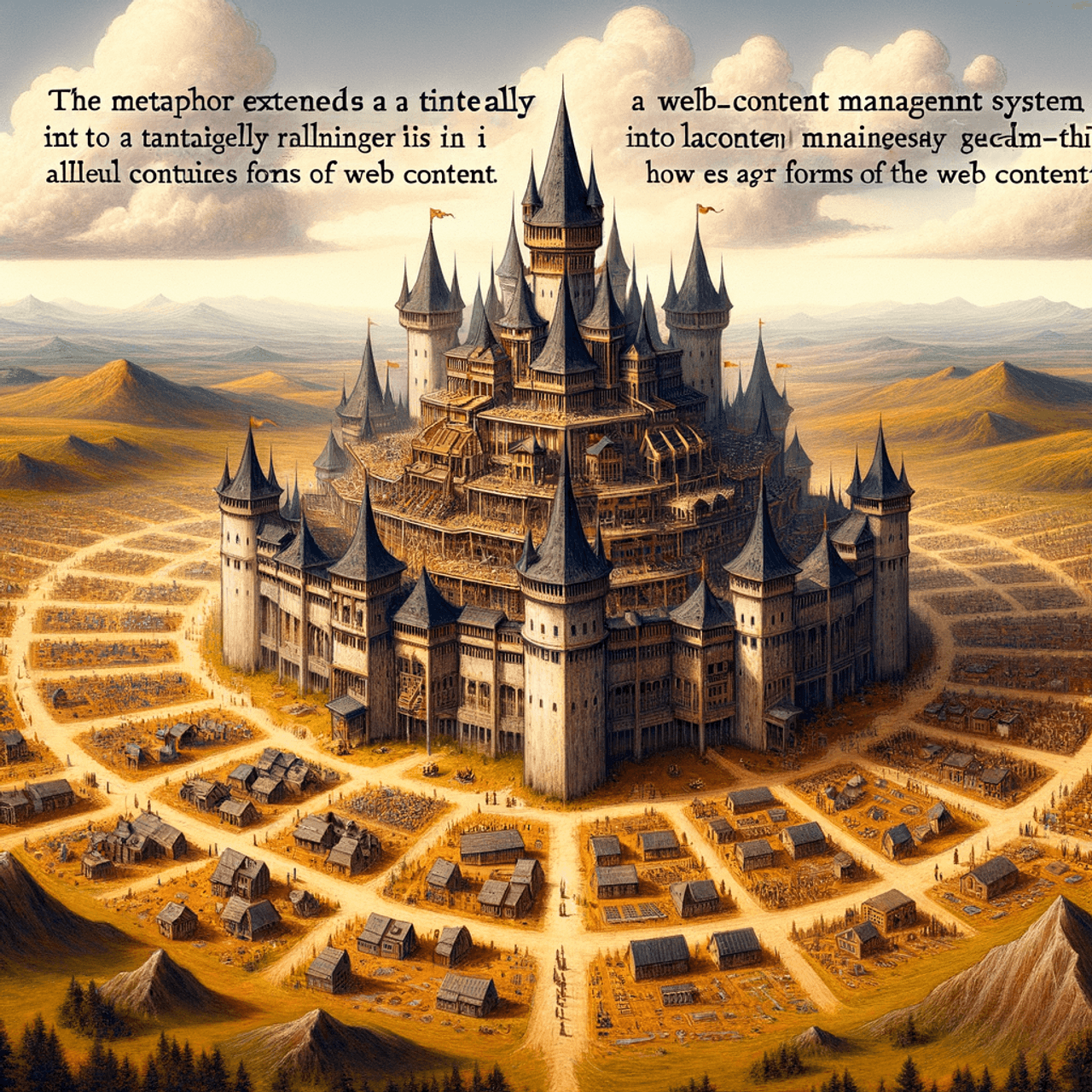 The future of content management is clear, and it looks a lot like ContentERP. With features that streamline workflows, foster real-time collaboration, and ensure security, ContentERP leads the way in how businesses will manage their content strategies for years to come.
The future of content management is clear, and it looks a lot like ContentERP. With features that streamline workflows, foster real-time collaboration, and ensure security, ContentERP leads the way in how businesses will manage their content strategies for years to come.
As content continues to evolve, one thing remains constant: the need for effective, efficient, and user-friendly tools. ContentERP checks all the boxes, ensuring your content team can focus on what they do best—creating exceptional content.
But here’s a question to leave you pondering: if ContentERP makes content management this easy, what will you do with all the extra time? It’s a riddle that, perhaps, only time will answer.
by ContentERP | Oct 13, 2024 | Uncategorized
Five Ways ContentERP Improves Team Communication and Collaboration
 Picture this: It’s the middle of a frantic workday. Your team is buzzing, deadlines are looming, and the meeting you scheduled to align everyone is already starting five minutes late. You open your inbox only to find an email thread longer than the Great Wall of China. Half of the team missed the attachments, someone responded with an unrelated question, and nobody seems to know who’s responsible for what. Sound familiar?
Picture this: It’s the middle of a frantic workday. Your team is buzzing, deadlines are looming, and the meeting you scheduled to align everyone is already starting five minutes late. You open your inbox only to find an email thread longer than the Great Wall of China. Half of the team missed the attachments, someone responded with an unrelated question, and nobody seems to know who’s responsible for what. Sound familiar?
It’s the modern-day version of the Tower of Babel—where no one speaks the same language, and chaos reigns. As funny (or terrifying) as this scenario may sound, it’s all too common for teams to navigate complex projects without clear communication tools. Fortunately, there’s a way to ensure your team can finally speak the same language and work seamlessly: ContentERP.
In this article, we’ll explore five key ways ContentERP revolutionizes team communication and collaboration, making sure your team is more coordinated than a well-rehearsed orchestra.
1. Centralized Communication Hub
Imagine a bustling newsroom, where journalists scramble to chase stories, editors make last-minute revisions, and photographers rush to capture the perfect shot. Now, imagine if none of them were in the same room or on the same page—literally. That’s what most teams deal with when communication is fragmented across different tools. One person is on email, another is in Slack, and a third only responds to Google Docs comments.
ContentERP solves this problem by acting as a centralized communication hub. All conversations, files, and tasks are managed in one place, eliminating the need to bounce between platforms. Whether it’s a brainstorming session or a task update, everything happens within the same ecosystem. This allows team members to collaborate in real-time without confusion or miscommunication.
When communication is streamlined, it’s like switching from a patchwork of tin-can telephones to a state-of-the-art walkie-talkie system: everyone’s on the same frequency. No more lost emails or vague messages—it’s communication clarity at its finest.
2. Task Assignments with Clear Accountability
We’ve all been there: an important project deadline is creeping up, and the entire team is confident someone else is working on it. But, surprise—no one is. In teams without clear task assignments, work can fall through the cracks faster than a coin in a couch cushion.
Enter ContentERP’s task assignment feature, where everyone knows what they’re responsible for, when it’s due, and who’s reviewing it. With its task tracking system, there’s no room for “I thought someone else was doing it.” You can assign tasks to specific team members, set deadlines, and add notes for clarity.
Think of it like a relay race, where each runner knows when to pass the baton. With ContentERP, your team won’t be fumbling the handoff. Tasks move smoothly, and everyone understands their role in the bigger picture.
3. Real-Time Collaboration on Content
If you’ve ever tried to work on a group project via email or separate documents, you’ve probably experienced the frustration of outdated versions, conflicting edits, and crossed wires. It’s like trying to drive two cars at the same time—impossible, frustrating, and, frankly, dangerous.
 ContentERP offers real-time collaboration features that allow multiple team members to work on the same document simultaneously. No more worrying about who has the latest version or waiting for someone to finish before you can contribute. Whether it’s website content, social media posts, or blog drafts, you can edit, comment, and review in real-time.
ContentERP offers real-time collaboration features that allow multiple team members to work on the same document simultaneously. No more worrying about who has the latest version or waiting for someone to finish before you can contribute. Whether it’s website content, social media posts, or blog drafts, you can edit, comment, and review in real-time.
This is where team communication skills shine. ContentERP encourages open collaboration and clear communication through document comments and task updates, making it easier to give and receive feedback. It’s like working on a shared canvas where every brushstroke is visible in real time, resulting in faster, more cohesive content creation.
4. Automated Notifications and Reminders
Remember the days of sticking Post-It notes everywhere or setting dozens of alarms on your phone to remember team deadlines? Now, imagine those reminders working automatically, without any effort from your end. ContentERP takes on that responsibility by providing automated notifications and reminders for every task.
Let’s say someone leaves a comment on a shared document or finishes a task—team members are automatically notified, reducing the risk of something slipping through the cracks. If you’ve ever been in a scenario where you missed a critical message, this feature feels like a personal assistant keeping track of your to-dos.
Notifications can also act as the nudge your team needs to stay on track, creating a healthy cycle of accountability. Like a gentle but persistent nudge from a colleague reminding you of the day’s priorities, these automated updates ensure nothing falls behind.
5. Visibility Across the Entire Team Workflow
In a restaurant kitchen, every chef needs to know what’s happening at each station to ensure that meals are prepared in harmony. If one station falters or doesn’t communicate, the entire kitchen falls into disarray. Similarly, in content creation, transparency is key to successful collaboration.
ContentERP provides a clear overview of team workflows, allowing each team member to see the progress of various tasks and projects. From the manager overseeing the content calendar to the social media strategist planning posts, everyone can track what’s in motion, what’s delayed, and what’s completed.
This level of visibility is like having x-ray vision into your team’s workflow. By understanding where things stand at any given time, the entire team can anticipate needs, prevent bottlenecks, and step in where necessary. It empowers everyone to stay proactive and informed.
 Where Clarity Meets Efficiency
Where Clarity Meets Efficiency
Ultimately, ContentERP transforms the way teams communicate and collaborate. From centralized communication and real-time editing to clear accountability and automated reminders, it’s the Swiss Army knife of team collaboration tools. It eliminates the chaos that plagues many teams and replaces it with streamlined communication, ensuring that everyone is on the same page and projects run like a well-oiled machine.
Related: The Winning Guide: How to Hire Someone to Create a Content Creation Plan
by ContentERP | Oct 13, 2024 | Uncategorized
From Chaos to Clarity: The Power of ContentERP: Automating Tasks to Improve Content Strategy
 “There is no wind that blows right for the sailor who doesn’t know where the harbor is.” This old proverb rings especially true for content managers struggling to navigate the ever-growing demands of digital marketing. In an age where content is king and SEO rules the throne, organizing, producing, and optimizing content has become a monumental task. The process can quickly spiral into chaos without the right strategy or tools. Enter ContentERP, a game-changing platform designed to bring order to the madness and streamline your content strategy through automation.
“There is no wind that blows right for the sailor who doesn’t know where the harbor is.” This old proverb rings especially true for content managers struggling to navigate the ever-growing demands of digital marketing. In an age where content is king and SEO rules the throne, organizing, producing, and optimizing content has become a monumental task. The process can quickly spiral into chaos without the right strategy or tools. Enter ContentERP, a game-changing platform designed to bring order to the madness and streamline your content strategy through automation.
In this guide, we will delve into how automating tasks with ContentERP transforms chaotic workflows into smooth, strategic operations, enabling businesses to focus on what truly matters—producing exceptional content that drives results.
The Problem with Manual Content Management
For years, marketers and content creators have relied on spreadsheets, emails, and a combination of siloed tools to manage their content strategies. While these methods might work for a small team or a single project, they quickly fall apart under the weight of multiple campaigns, SEO demands, and content creation schedules.
Imagine trying to manage a sprawling library of articles, social media posts, SEO keywords, and publishing schedules all by hand. It’s like trying to juggle flaming words—you might get by for a while, but sooner or later, something is bound to slip. Mistakes become inevitable: deadlines are missed, content is forgotten, and the quality of work begins to suffer.
Automation, in this context, is more than just a time-saver; it’s a lifeline. Tools like ContentERP take the manual labor out of content management, providing a cohesive platform where all the moving parts of your strategy can come together effortlessly. It’s the key to turning chaos into clarity.
How ContentERP Automates Your Workflow
 ContentERP revolutionizes content creation by automating the most tedious aspects of managing a content strategy. Here’s how it transforms your workflow:
ContentERP revolutionizes content creation by automating the most tedious aspects of managing a content strategy. Here’s how it transforms your workflow:
1. Centralized Content Hub
The first step in turning chaos into clarity is centralization. ContentERP functions as a centralized hub where all your content—drafts, published pieces, social media updates, and even SEO reports—can be stored and accessed easily. No more hunting through emails or scattered documents. Think of it as your content library, neatly organized and fully automated, so you can spend less time searching and more time creating.
2. Automated Task Assignment
In a fast-paced content environment, delegating tasks efficiently is crucial. ContentERP allows you to automate task assignments based on your team’s roles and deadlines. Writers, editors, designers, and SEO specialists can receive notifications directly, ensuring that every part of the content creation process moves like clockwork. This feature eliminates the need for micromanagement and streamlines communication.
3. SEO Optimization Made Simple
Content is only as good as its visibility. Integrating SEO automation is one of the most powerful features of ContentERP. By syncing with some of the best SEO tools—from keyword research to content optimization—ContentERP ensures that each piece you produce is optimized for search engines from the get-go. Tools like SEO content writing assistants are baked into the platform, analyzing your drafts and providing real-time feedback on keyword usage, readability, and SEO best practices.
Small SEO tools are especially valuable for businesses looking to maximize their reach without the budget for enterprise-level SEO solutions. By automating the analysis and integration of SEO keywords, ContentERP ensures that every piece of content is SEO-friendly without requiring manual oversight.
4. Content Calendar Automation
A critical piece of any content strategy is the editorial calendar. However, creating and maintaining a publishing schedule can be as painful as it is important. ContentERP automates this process by allowing you to schedule posts months in advance. The platform can automatically adjust deadlines and notifications, ensuring that your content is always on time, every time. It’s like having a personal assistant whose only job is to make sure your calendar runs smoothly.
5. Data-Driven Insights and Reporting
Another game-changing aspect of ContentERP is its ability to provide automated analytics and reporting. Keeping track of how each piece of content performs—whether it’s a blog post, a social media update, or a video—can be a cumbersome task. ContentERP tracks performance metrics like page views, engagement rates, and conversion metrics, offering you real-time insights. This data is compiled into easy-to-understand reports, giving you a clear view of what’s working and what needs improvement. With the power of analytics at your fingertips, you can refine your content strategy and boost your results.
6. Collaborative Editing and Workflow
Managing content is rarely a solo effort. Content creation often involves multiple stakeholders—writers, editors, designers, and marketers—all working together. ContentERP fosters seamless collaboration by automating workflows. Whether it’s notifying an editor that a draft is ready for review or sending final approvals to a manager, the system ensures that content moves smoothly through the pipeline. It’s the digital equivalent of passing a baton in a relay race, where every team member knows their role and executes it at the right time.
ContentERP vs. Traditional Tools: A Clear Winner
So why choose ContentERP over traditional tools like Google Spreadsheets or website content writing platforms? While spreadsheets and basic document-sharing tools may suffice for simple projects, they fall short in the dynamic, fast-paced world of content creation. Here’s why:
-
Google Spreadsheets are great for managing simple tasks, but when it comes to large-scale content strategies involving multiple teams and complex deadlines, they quickly become cumbersome.
-
Website content writing tools offer specialized features but lack the integrated approach that platforms like ContentERP provide. With ContentERP, you’re not just optimizing one aspect of your strategy; you’re managing the entire workflow from ideation to publication.
In short, while traditional tools can help you manage tasks, they don’t compare to the automation, integration, and scalability that ContentERP offers.
How Automation Improves Content Strategy
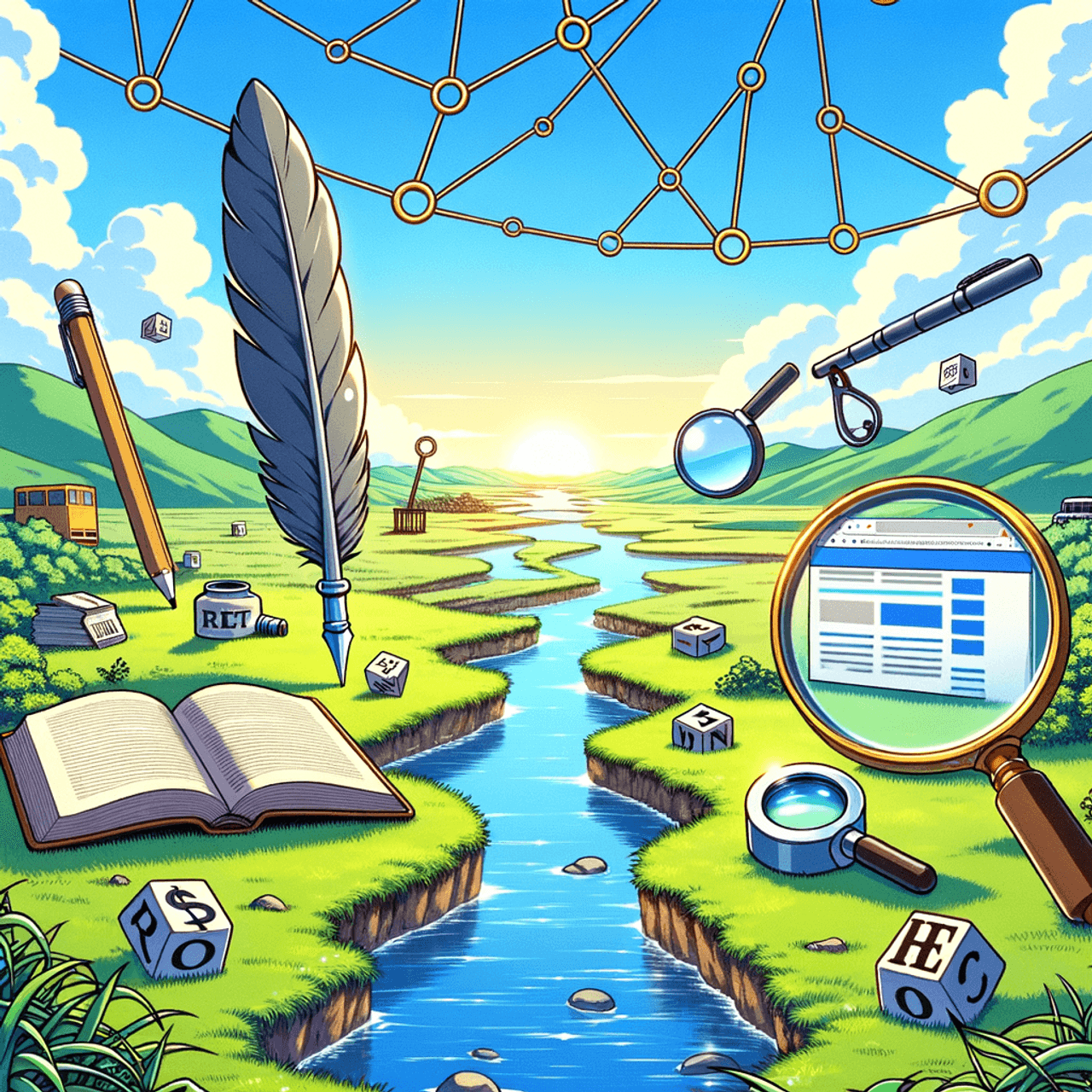 Now that we’ve examined how ContentERP functions, let’s take a step back and look at the bigger picture: how automation improves your overall content strategy.
Now that we’ve examined how ContentERP functions, let’s take a step back and look at the bigger picture: how automation improves your overall content strategy.
Automation allows you to focus on strategic thinking, rather than the nuts and bolts of task management. With ContentERP handling the minutiae—such as task delegation, SEO optimization, and deadline tracking—you can concentrate on refining your brand’s voice, planning long-term campaigns, and experimenting with new content formats. Automation frees you from the constant grind of managing content, allowing you to scale your efforts without sacrificing quality.
From Chaos to Clarity
In the world of content strategy, the difference between chaos and clarity often boils down to one thing: automation. Platforms like ContentERP offer more than just tools—they provide the structure and foresight necessary to navigate the complexities of modern content creation. By centralizing tasks, automating workflows, and integrating SEO, ContentERP brings the kind of order that transforms even the most chaotic strategy into a well-oiled machine.
And as Lewis Carroll wrote in Alice in Wonderland, “If you don’t know where you’re going, any road will get you there.” ContentERP not only shows you the road but paves it for you, ensuring that your content strategy arrives at its intended destination with minimal detours. So, are you ready to trade chaos for clarity? The choice is yours, but the roadmap has never been clearer.
Related: The Winning Guide: How to Hire Someone to Create a Content Creation Plan
by ContentERP | Oct 13, 2024 | Uncategorized
Enhance Your Team’s Efficiency with Real-Time Progress Tracking in ContentERP
In 1969, as the world watched Neil Armstrong set foot on the moon, few knew the immense effort behind tracking every detail of the mission. NASA’s success was not just about rocket science; it hinged on meticulous, real-time progress tracking. From the speed of the spacecraft to the astronauts’ oxygen levels, every data point was monitored to ensure success. Without real-time tracking, the world might never have heard those famous words: “That’s one small step for man, one giant leap for mankind.”
 Much like NASA’s mission, managing content teams requires precision, coordination, and most importantly, a way to track progress in real-time. This is where ContentERP comes in. While it may not help you land on the moon, it can certainly help your team reach new heights in productivity and efficiency. So, how does real-time progress tracking with ContentERP revolutionize your workflow, and what makes it essential in today’s fast-paced digital world?
Much like NASA’s mission, managing content teams requires precision, coordination, and most importantly, a way to track progress in real-time. This is where ContentERP comes in. While it may not help you land on the moon, it can certainly help your team reach new heights in productivity and efficiency. So, how does real-time progress tracking with ContentERP revolutionize your workflow, and what makes it essential in today’s fast-paced digital world?
Why Real-Time Progress Tracking is a Game-Changer
Imagine trying to bake a cake but having no idea how long it’s been in the oven or whether the ingredients were mixed correctly. You’d be left with a mess, not a masterpiece. The same goes for managing content projects. Without real-time tracking, you’re flying blind, with no sense of how far along your team is or whether you’re on track to meet deadlines.
Real-time progress tracking provides transparency, enabling teams to monitor each stage of a project as it unfolds. Tools like ContentERP ensure that nothing slips through the cracks by providing a bird’s-eye view of your team’s workflow. Whether you’re overseeing a blog post, a social media campaign, or an entire website launch, ContentERP’s tracking tools keep you informed at every step of the way, much like the mission control for your team’s content operation.
The Power of Progress Tracking Tools in ContentERP
What sets ContentERP apart is its comprehensive progress tracking tools. These features are designed to keep projects moving smoothly, without the constant need for status meetings or endless email threads.
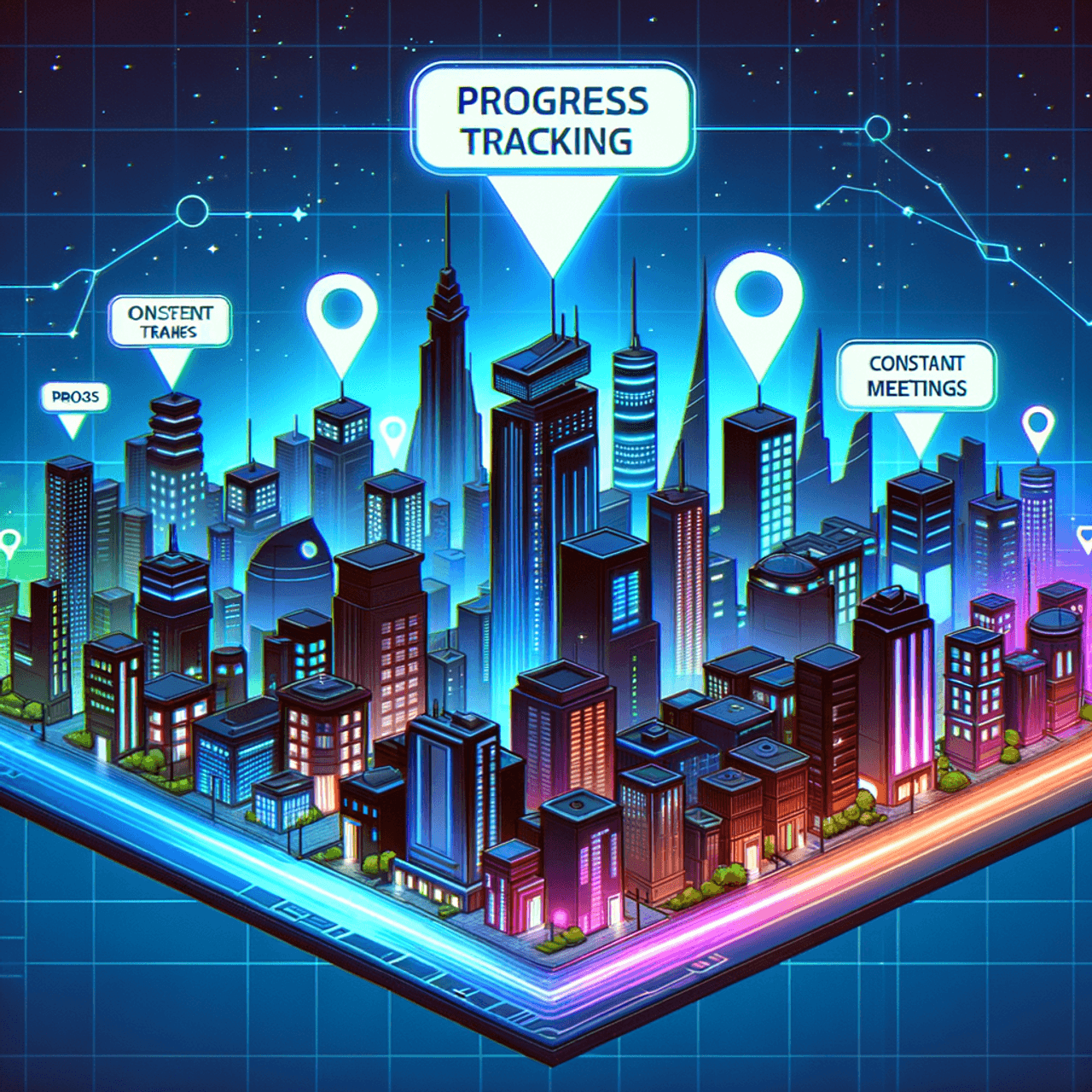
-
Multiple Project Tracking Dashboard: Just as NASA had to keep tabs on multiple systems at once, your team likely juggles multiple projects simultaneously. ContentERP’s dashboard gives you a clear snapshot of all your ongoing projects. Each team member’s tasks are visible, along with deadlines, status updates, and priority levels. With this, managing multiple campaigns, blog posts, and social media content becomes as simple as flipping through channels on a TV remote.
-
Customizable Milestones and Goals: One size does not fit all when it comes to content creation. Some projects may have a long lead time, while others need to be turned around quickly. ContentERP allows you to set customizable milestones and goals, making it easy to track progress on any timeline. Whether it’s tracking the completion of individual tasks or reaching major campaign milestones, you’ll always know where your project stands.
Boosting Accountability and Collaboration
Progress tracking isn’t just about keeping an eye on deadlines. It fosters a culture of accountability and collaboration. Think of it like a well-oiled machine where every gear must turn at the right speed to keep the engine running smoothly.
In ContentERP, every team member’s role is clearly defined, and their progress is visible to the entire team. This transparency encourages accountability; no one wants to be the gear that slows down the machine. Team members can check in on each other’s work, offer help where needed, and ensure that the project stays on track.
Additionally, real-time updates mean that team members are always aware of changes and can adapt quickly. For instance, if a task is delayed, the rest of the team can be notified instantly and adjust their own timelines accordingly, ensuring that a delay in one area doesn’t derail the entire project.
Efficiency Through Automation
Manual tracking is a thing of the past. In the digital age, automation is king. ContentERP takes progress tracking to the next level by automating many of the tedious, repetitive tasks that eat up your team’s time. From setting reminders for upcoming deadlines to automatically updating the progress of tasks as they’re completed, ContentERP ensures that your team can focus on what matters most—creating great content.
This automation reduces the need for constant check-ins and micromanagement. It’s like having a personal assistant who never forgets a task, never misses a deadline, and always keeps your team organized.
Personal Goal Tracking and Performance Metrics
Just as athletes track their personal bests, content teams need a way to measure individual performance. ContentERP’s personal goal tracker allows team members to set personal milestones and track their own progress. This feature isn’t just about productivity; it’s about growth. Team members can see how their work contributes to the larger project and identify areas for improvement.
Moreover, managers can use performance metrics to offer feedback and ensure that the team is always improving. This isn’t just progress tracking—it’s progress enhancement.
The Best Project Management Tools for Small Business Teams
Small businesses often face the challenge of managing multiple roles with fewer resources. ContentERP’s best project management tools are tailored to suit the unique needs of small teams. Its user-friendly interface, combined with robust tracking and collaboration features, ensures that even small businesses can manage complex content workflows with ease.
Think of ContentERP as the Swiss Army knife of content management. Whether you need to delegate tasks, monitor progress, or adjust timelines, ContentERP has the right tool for the job—allowing small teams to work like a much larger, more sophisticated operation.
Conclusion: A Paradox of Simplicity and Complexity
 Real-time progress tracking in ContentERP is like having your very own mission control. You can see everything, control everything, and ensure that every project, no matter how complex, is completed efficiently. It eliminates guesswork, reduces miscommunication, and keeps your team working at its highest potential.
Real-time progress tracking in ContentERP is like having your very own mission control. You can see everything, control everything, and ensure that every project, no matter how complex, is completed efficiently. It eliminates guesswork, reduces miscommunication, and keeps your team working at its highest potential.
But here’s the paradox: As your content management becomes more organized and efficient with real-time tracking, does it also become more complex? After all, the smoother the system, the more intricate its inner workings become. So, as you automate and streamline, are you really simplifying your workflow—or are you adding layers of complexity that only a tool like ContentERP can unravel? The answer lies in the seamless balance of simplicity and sophistication that ContentERP brings to the table.
by ContentERP | Oct 13, 2024 | Uncategorized
Effective Progress Tracking Strategies
 1. Understanding Progress Tracking
1. Understanding Progress Tracking
Progress tracking is a systematic approach to monitoring and evaluating the advancement towards set goals. It is crucial because it allows individuals and teams to measure how far they’ve come, identify areas that need improvement, and stay aligned with their objectives. Tracking progress is instrumental in improving productivity and efficiency as it provides clarity and enables quick adjustments to strategies if they are not yielding desired results. A key component in this process is goal setting, which guides the tracking efforts by providing clear, actionable
2. Tools and Techniques for Tracking Progress
When it comes to digital tools for progress tracking, Trello, Asana, and Microsoft Planner stand out as excellent choices. Trello utilizes a card-and-board system, allowing users to move tasks through different stages of completion with ease, while Asana offers robust project management features, such as timeline views and task dependencies, making it ideal for complex projects. Microsoft Planner integrates seamlessly with other Microsoft Office tools, providing a coherent ecosystem for those already using Office 365. On the other hand, traditional methods
3. Setting SMART Goals
Setting SMART goals is crucial for effective progress tracking and entails creating objectives that are Specific, Measurable, Achievable, Relevant, and Time-bound. For example, instead of a vague goal like “improve fitness,” a SMART goal would be, “Run a 5K in under 30 minutes within three months by following a structured training plan.” This provides clear criteria to measure progress and ensures the goal is both attainable within the timeframe and relevant to one’s overall fitness ambitions. Utilizing the SMART criteria
4. Reviewing and Adjusting Goals
Regular progress reviews are essential for maintaining momentum and ensuring that goals remain relevant and achievable. They provide an opportunity to assess performance, identify any obstacles, and make necessary adjustments to stay aligned with overall objectives. When adjusting goals, it is important to first analyze the reasons for any deviations from the original plan, then redefine the steps needed to overcome these challenges, and realign resources accordingly. Implementing regular reviews fosters a culture of continuous improvement, allowing individuals and teams to stay focused, motivated, and adaptive to
5. Overcoming Challenges in Progress Tracking
Common challenges and pitfalls in progress tracking commonly include lack of consistency, setting unrealistic goals, and dealing with distractions that hinder productivity. These obstacles can derail progress and cause frustration, making it essential to identify and address them early. Strategies to stay motivated and on track involve breaking larger tasks into smaller, manageable steps, setting clear and achievable milestones, and regularly reviewing and celebrating progress to maintain momentum. Continuous improvement, through regular self-assessment and adaptability, also plays a vital role in refining strategies and ensuring sustained productivity.
by ContentERP | Oct 13, 2024 | Uncategorized
The Ultimate Guide to Content Creation with ContentERP
 Content creation is no longer a luxury but a necessity in today’s digital age. The ever-expanding digital world craves new ideas, fresh perspectives, and innovative strategies to stand out. But how can one consistently create quality content in a world overflowing with information? And more importantly, how can a digital content creator ensure their workflow is efficient, seamless, and scalable?
Content creation is no longer a luxury but a necessity in today’s digital age. The ever-expanding digital world craves new ideas, fresh perspectives, and innovative strategies to stand out. But how can one consistently create quality content in a world overflowing with information? And more importantly, how can a digital content creator ensure their workflow is efficient, seamless, and scalable?
In the fast-paced world of content creation, staying ahead of the curve isn’t just about creativity—it’s about optimizing your tools and strategy. Welcome to ContentERP, the all-in-one content creation platform designed to streamline every step of the process, from idea generation to publishing. This guide will walk you through how to maximize your potential with ContentERP.
Why Content Creation is Key to Success
Content creation isn’t merely about posting blogs, tweets, or videos. It’s about crafting compelling, relevant, and timely messages that resonate with your audience. Whether you’re a social media content creator, a digital content creator, or managing a team of creators, content defines your brand’s voice and image.
With the demand for content constantly growing, it’s no wonder that content creators are turning to sophisticated tools like ContentERP to stay ahead. No longer limited to pen and paper (or their digital equivalents), creators now have access to platforms that generate ideas, track metrics, and manage content, making the entire process more manageable.
The Problem with Traditional Methods
Before diving into how ContentERP transforms the process, it’s worth acknowledging the old methods many still use. Some digital creators and content writing services rely on a myriad of spreadsheets, disjointed tools, and manual tracking processes. Not only does this waste time, but it also opens the door to mistakes, miscommunications, and lost opportunities.
Think about the chaos that ensues when managing content across different platforms without an integrated system—email threads, Google Docs, Excel sheets—each containing a fragment of the big picture. The result? Inefficiency. For teams creating and managing large volumes of content, this can lead to bottlenecks, missed deadlines, and a lack of cohesion. That’s where ContentERP shines, bridging the gap between content ideation and execution.
ContentERP: The All-in-One Solution
Imagine trying to bake a cake, but instead of one recipe, you’re using five. It’s inefficient and confusing. ContentERP is like the master recipe for content creation—streamlined, clear, and designed to enhance productivity.
 1. Integrated Content Creation Tools
1. Integrated Content Creation Tools
-
From generating ideas to producing polished pieces, ContentERP offers a complete suite of content creation tools. You no longer need to bounce between different platforms or rely on external applications. Content generators within the platform help fuel creativity, providing content creation ideas that cater to your brand and audience.
-
Need to quickly produce multiple pieces of content for a campaign? ContentERP’s content generator will save you time, offering suggestions, formats, and strategies in real-time. It’s like having a personal writing assistant at your fingertips.
2. Seamless Collaboration for Teams
-
Collaboration is often where many content projects falter. ContentERP’s robust platform allows team collaboration in a fluid, transparent manner. Teams can see who’s working on what, share feedback, and track progress. Instead of being a scattered assembly line, it functions more like an orchestra, where each part complements the other in perfect harmony.
-
With the ability to assign roles to every content creator and monitor their tasks, leaders can ensure deadlines are met without sacrificing quality. You’ll never lose track of your project’s workflow again.
3. Content Management and Scheduling
-
ContentERP takes the headache out of planning and scheduling. Imagine having a content creation platform that not only organizes your ideas but also helps you develop a comprehensive content strategy. It offers everything you need to curate a consistent stream of engaging, well-timed content.
-
Social media content creators will particularly benefit from the platform’s scheduling capabilities. With social media content creation being time-sensitive, having a tool that allows you to queue posts and manage multiple accounts is invaluable.
4. Analytics and Feedback
-
Creating content is only half the battle—understanding how it performs is just as crucial. ContentERP offers built-in analytics to help track the effectiveness of your efforts. You can monitor performance, measure engagement, and adjust your strategy based on real-time insights. The platform’s feedback loop ensures that each piece of content not only reaches its target but resonates with them.
-
Whether you’re running a blog, offering content writing services, or managing a large-scale campaign, these analytics help guide your next steps, ensuring that your content continually improves.
Simplifying the Creative Process for Beginners
Content creation can feel like an overwhelming task, especially for those new to the field. Content creation for beginners often involves navigating multiple tools, learning the nuances of SEO, and figuring out the right platforms. ContentERP simplifies this process by consolidating everything a beginner needs into one dashboard.
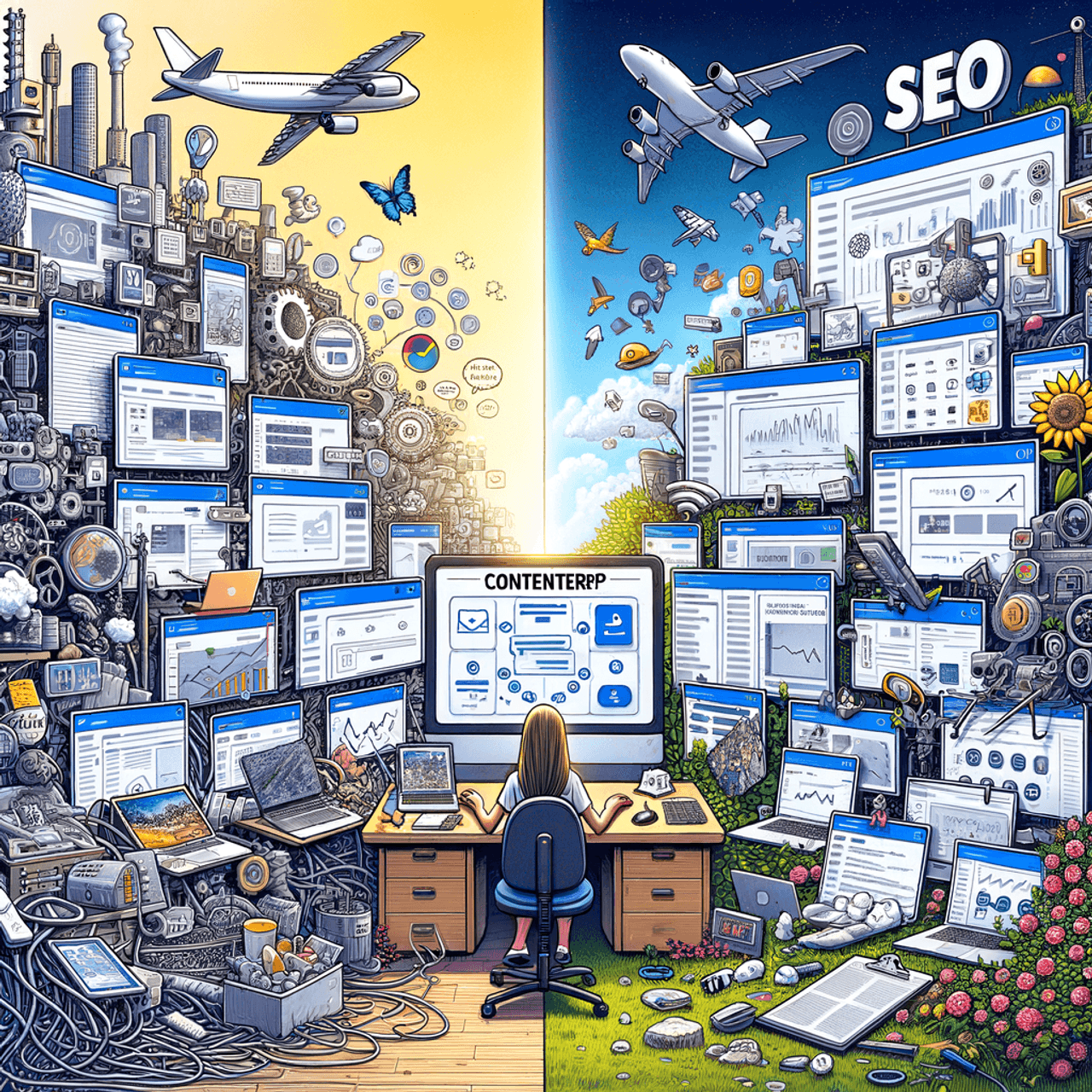 From generating content creation ideas to refining them with content writing tools, it’s never been easier for beginners to thrive. The intuitive interface means you don’t need to be a tech expert to get started.
From generating content creation ideas to refining them with content writing tools, it’s never been easier for beginners to thrive. The intuitive interface means you don’t need to be a tech expert to get started.
The Content Creation Workflow Simplified
Every creator, whether part of a content management team or working solo, understands the importance of a seamless content workflow. With ContentERP, creators can visualize their workflow from start to finish, ensuring every piece of content flows from ideation to execution smoothly. No more missing pieces, no more guesswork—just a streamlined process that allows for maximum efficiency and creativity.
A Platform That Grows with You
As your content needs evolve, so does ContentERP. Whether you’re scaling up to meet the demands of a larger audience or refining your approach for a niche market, the platform is flexible enough to adapt. Its modular design means you can integrate it with your existing tools, or use it as a standalone solution that enhances your content creation efforts.
Content Creation Made Simple
Think of ContentERP as the lighthouse in a sea of chaotic content creation. It offers clarity, direction, and guidance to those looking to enhance their content strategies and workflows. Just as a well-tuned machine performs at its best when every part works in unison, a great content strategy requires the right tools to ensure efficiency and quality.
To close with a thought-provoking question: If you could elevate your content creation process with just one platform, why wouldn’t you choose the tool that’s built to transform the way you create?
 1. A Centralized Web Content Management System
1. A Centralized Web Content Management SystemThe future of content management is clear, and it looks a lot like ContentERP. With features that streamline workflows, foster real-time collaboration, and ensure security, ContentERP leads the way in how businesses will manage their content strategies for years to come.
